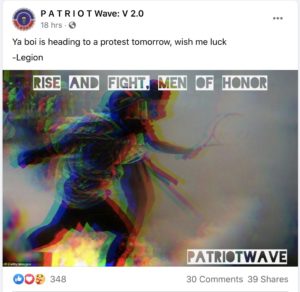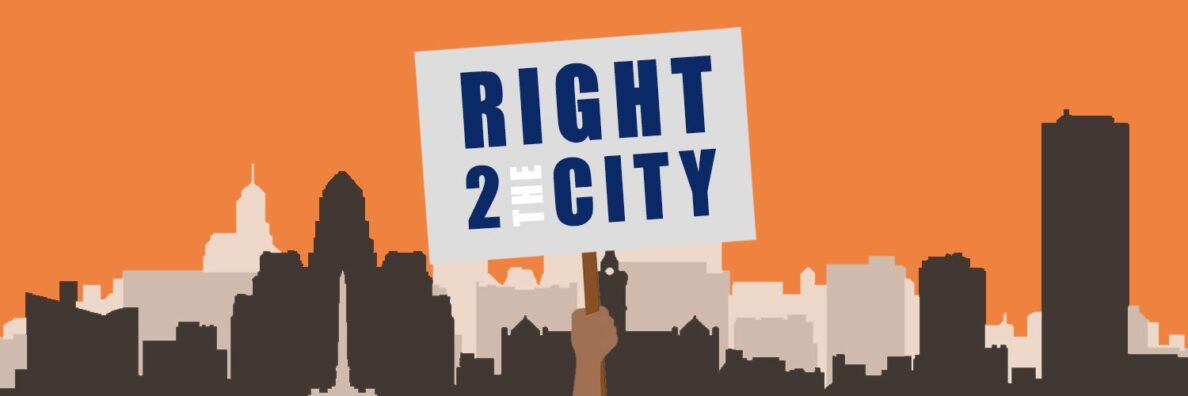By Geoff Kelly
Reposted from Investigative Post
June 5, 2020
Politicians and police have little solid evidence to back up their claims that outside forces are behind protest disturbances here
Politicians and police have been raising the spectre of “outside agitators” since the day protests began in Buffalo. For the most part, local media has amplified the message: Outsiders are slipping into town to incite violence and destruction.
But arrest records suggest that narrative is not true. And officials allow that much of the intelligence underlying the claim consists of posts on social media, not known as a reliable source of accurate information. There are other sources, authorities say, but they are unwilling to discuss them.
And so the phrase — freighted with bigotry, according to UB professor Henry Louis Taylor Jr. — has been repeated again and again, here and in other cities.
Prior to the May 30 demonstration against police brutality, Buffalo Mayor Byron Brown warned that “outside agitators” would use peaceful protests as cover to incite violence and destruction.
“We know that outside agitators are planning to come to the protest in Buffalo,” Brown said at a press conference that afternoon. “They are planning to incite violence. They are planning to disrupt the peace of this community.”
If any of that happened, Buffalo police failed to catch the out-of-towners in the act. All but one of the 30 people arrested over four days of protests — May 30 through June 2 — were from Western New York.
Twenty-two of those arrested are from Buffalo. Seven more reside within Erie County, one in Niagara County, and one in Cattaraugus County.
One gave an address in Bronxville, New York, in Westchester County. That person was arrested Sunday evening in Niagara Square for a nonviolent offense: violating the city- and county-imposed curfew.

Buffalo’s local arrest sheet comports with those in other cities, including Minneapolis, where the May 25 killing of George Floyd by city police sparked protests that have spread nationwide. Minneapolis Mayor Jacob Frey, too, warned of “outside agitators” and claimed last Friday that “every single person” arrested during protests that night was from out of state.
Frey was forced to walk back that claim the next day, because it turned out to be false: Most of those arrested were residents of Minneapolis and surrounding communities. Similarly, Minnesota Gov. Tim Walz was compelled to back away from his unfounded claim that 80 percent of protesters in Minneapolis came from out of state.
Assessing protests in Washington, D.C. and across the country, U.S. Attorney General William Barr cited “outside radicals and agitators … exploiting the situation to pursue their own separate and violent agenda.”
And President Donald Trump continues to attribute the unrest in D.C. to “Antifa,” a leaderless affinity of leftists and anarchists Trump wants to designate a terrorist organization.
The Federal Bureau of Investigation contradicted the president’s assessment, according to a June 1 situation report obtained by The Nation. Based on its agents’ observations, conversations with informants, and monitoring of social media and news reports, the FBI concluded there was “no intelligence indicating Antifa involvement/presence” in the Washington, D.C. protests.
Cops here in Buffalo haven’t detected “outside agitators” stirring up mischief, either, according to the president of the police union.
“I don’t know that it’s Antifa, or Black Lives Matter, or splinter groups, or what the deal is on that,” John Evans, president of the Buffalo Police Benevolent Association, told Investigative Post.
Going by reports from his union members, Evans said, all aspects of the demonstrations — peaceful and angry, demanding justice and breaking store windows — were homegrown.
“The hoax that these were out-of-towners — that’s nonsense,” Evans said. “They were from Buffalo. That is Buffalo.”
The evidence
Erie County Executive Mark Poloncarz echoed Brown’s warning against outside agitators, as did Erie County District Attorney John Flynn and U.S. Attorney James P. Kennedy. Brown repeated the warning and the phrase, several times in the days that followed, including in a statement justifying the imposition of a curfew that extends through this coming Sunday.
“We respect the right to peacefully protest,” Brown said on Tuesday. “But for those opportunists; for those outside agitators; for people who want to loot, want to steal, want to vandalize, want to damage – there is no place for that in our community.”
Brown’s spokesman, Michael DeGeorge, told Investigative Post the initial warnings regarding outside agitators were based on intelligence reports provided by law enforcement agencies. Those intelligence reports were derived largely, though not exclusively, from social media chatter, he said. He referred Investigative Post to the Buffalo Police Department for details.
Captain Jeffrey Rinaldo, the department’s spokesperson, said the department received warnings “from numerous citizen based and law enforcement organizations regarding the outside agitators.”
There was a great deal of social media activity regarding the May 30 protest, some of it foreboding. There was, for example, this post made to the Facebook page called PATRIOT Wave: V 2.0 by a user with the handle “Legion”:

The post was tweeted out on May 30 by Alex Goldenberg, a New York City-based researcher who follows radical groups on social media, as evidence troublemakers from the Boogaloo movement were “heading to the #Buffalo protest today,” possibly to incite “violent confrontation against Law Enforcement and Government officials.”
Goldenberg’s tweet was shared widely among Western New York activists, as were other warnings about right-wing and white-supremacist groups planning to disrupt the protest. These messages comprised some of the intelligence on which the warnings of “outside agitators” were based.
On Twitter, “Legion” — using the handle @Legion30299098 — replied to Goldenberg that he attended the Buffalo protest to provide emergency medical support, that he’d engaged in no provocative activity and witnessed little violence apart from protesters attacking a driver they believed had tried to run down members of the crowd. The driver was hospitalized, her car trashed.
Kait Munro, spokesperson for Erie County District Attorney John Flynn, told Investigative Post the DA and other law enforcement agencies were looking into the question of “outside agitators causing disruptions in the protests.”
“The DA has not said there is definitive proof, but it is being investigated,” Munro said.
DeGeorge, the mayor’s spokesperson, said there were 200 to 300 New York State troopers posted in Buffalo for the protests, as well as details from the Erie County Sheriff’s Department, Amherst Police Department, and other municipalities. Sheriff’s and Customs & Border Patrol helicopters have plied city skies incessantly for the past six days.
Term freighted with history
Rinaldo, the police spokesperson, suggested a more subtle definition of “outside agitator,” distinguished not by geography or ideology but by intent.
“If someone is hosting a peaceful protest and other people show up and become violent, then I would say it’s safe to say they are clearly an agitator of that event,” Rinaldo said.
Henry Louis Taylor, Jr., director of the Center for Urban Studies at the University at Buffalo, notes that the term has a long history in the United States. After the Civil War, Southerners used it to disparage Northerners — “carpetbaggers” — engaged in Reconstruction. Later, the term was used to define labor organizers as, among other things, agents of an international communist conspiracy.
During the American Civil Rights movement of the 1950s and 1960s, Taylor said, Southern law enforcement and elected officials frequently characterized organizers from Northern states as “outside agitators.”
In many cases, Taylor noted, the term was applied to groups of predominantly white people organizing poor people and people of color. It’s being used that way now, he said.
“It is an extraordinarily clever way of suggesting that an uprising within a community is provoked not by problems and injustices imposed upon that community, but by outsiders using that community to further their own agenda,” Taylor said.
By attributing a community’s expression of anger to “outside agitators,” Taylor said, leaders absolve themselves of addressing the causes of that anger.
“In the current context, however, it’s really risen to a level of stupidity,” he continued. “We’re talking about a national, and now international, demonstration against the murder of George Floyd, and against the killings of black people by police.”
Police killed 243 African Americans in 2019, Taylor said. The resulting “rebellion,” as Taylor called it, is approaching two weeks old and has spread not only across the nation, but the globe.
“Who’s outside that?” Taylor said. “How can you be an outsider to that?”
